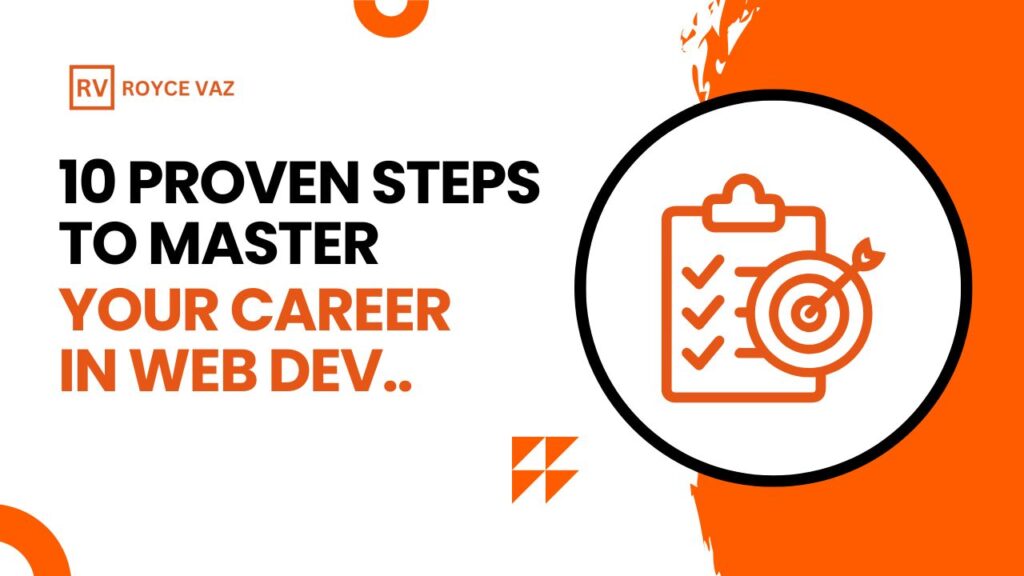Welcome to the exciting world of web development! If you’ve ever wondered, “What is this web development?” or wanted to know how websites are created, you’re in the right place. This guide will break everything down for you, step by step, so you can start building your first web project today.

What Is Web Development?
Web development is the process of creating websites and web applications that run on the internet. It involves a combination of coding, designing, and problem-solving to build everything from simple blogs to complex e-commerce platforms. But what exactly happens in web development? It all starts with understanding the building blocks like HTML, CSS, and JavaScript the backbone of any website.
Think of it this way: when you open a website, you see text, images, and buttons. HTML structures the content, CSS makes it look good, and JavaScript brings it to life by adding interactivity.
The 7 Steps of Web Development
To answer the question, “What are the 7 steps of web development?”, here’s a simplified roadmap:
1. Planning: Define the purpose and goals of your website.
2. Wireframing: Create a blueprint of your site’s layout.
3. Designing: Use tools like Figma or Adobe XD to design visuals.
4. Developing Frontend: Code the design using HTML, CSS, and JavaScript.
5. Developing Backend: Set up servers, databases, and APIs if needed.
6. Testing: Check for bugs and ensure the site works on all devices.
7. Deployment: Launch your site live on the internet.
Frontend vs. Backend: What’s the Difference?
When people talk about web development, they often mention frontend and backend. But what’s the difference?
Frontend Development
This is what users see and interact with on a website. It involves tools like:
– HTML: The skeleton of the website.
– CSS: Responsible for styling and layout. Wondering, “What is CSS used for?” It’s what makes a website visually appealing.
– JavaScript: Adds interactivity, like clickable buttons or animations.
Backend Development
This is the behind-the-scenes magic. It’s all about:
– Storing and retrieving data from a database.
– Running the server where your website lives.
– Using languages like Python, Ruby, or PHP.
Together, frontend and backend developers ensure that websites are both beautiful and functional.
Essential Tools for Beginners
Getting started with web development doesn’t require fancy equipment. Here’s what you’ll need:
1. Code Editor: Tools like VS Code or Sublime Text make writing code easier.
2. Web Browser: Chrome or Firefox with developer tools enabled for testing.
3. Version Control: Git and GitHub help you manage code changes.
Pro Tip: Start with small web development projects like a personal portfolio to practice your skills.
What Is HTML?
HTML, or Hypertext Markup Language, is the foundation of web pages. It tells the browser what content to display. For example:
“`html
<h1>Welcome to My Website</h1>
<p>This is a paragraph.</p>
“`
It’s as simple as learning the basic tags and experimenting. HTML is often the first step in your web development journey.
Adding Style with CSS
CSS (Cascading Style Sheets) takes the plain structure of HTML and transforms it. You can:
– Change fonts and colors.
– Add backgrounds and borders.
– Create responsive designs that work on mobile and desktop.
Bootstrap, a popular framework, simplifies CSS by providing pre-designed components like buttons, grids, and forms. “What is Bootstrap web?” It’s your shortcut to professional-looking websites.
Why Learn JavaScript Language?
JavaScript is the heart of dynamic websites. It powers:
– Slideshows and animations.
– Real-time updates without refreshing the page.
– User input validation in forms.
It’s also the gateway to learning modern libraries like React or frameworks like Node.js, which are essential for building Web 3 websites.
Types of Web Development
If you’re wondering, “What are 3 types of web development?”, here they are:
1. Frontend Development: Focuses on what users see.
2. Backend Development: Handles server and database interactions.
3. Full-Stack Development: Combines both frontend and backend skills.
Fun Fact: Full-stack developers are in high demand because they can handle all aspects of a project.
Exploring Web Development Languages
The languages you choose depend on your goals. Here’s a quick breakdown:
– Frontend: HTML, CSS, JavaScript.
– Backend: Python, PHP, Ruby, Java.
– Database: SQL, MongoDB.
Learning these opens up various *web development jobs* in design, programming, and more.
What Is WWW and Its Uses?
WWW, or the World Wide Web, is the system of interlinked documents accessed via the internet. Every time you click a link, you’re navigating the web. It’s the backbone of web development and powers websites globally.
Best Projects for Portfolio
Curious, “Which project is best for web development?” Start with these:
– A personal portfolio website.
– A blog platform.
– A to-do list app using JavaScript.
As you grow, you can explore advanced *web development projects* like e-commerce platforms or Web 3 websites.
The Web Development Roadmap
A web development roadmap provides a structured path to learn skills like HTML, CSS, JavaScript, and beyond. It helps you decide whether to focus on frontend, backend, or full-stack development.
Don’t know where to start? Download our roadmap to get clarity and accelerate your journey.
Your Next Steps
Web development is a thrilling field with endless opportunities. Whether you’re building your first project or aiming for a career, the key is to start small and stay consistent.
—
Feel free to reach out if you have any questions. Remember, every great developer started as a beginner. You’ve got this!

